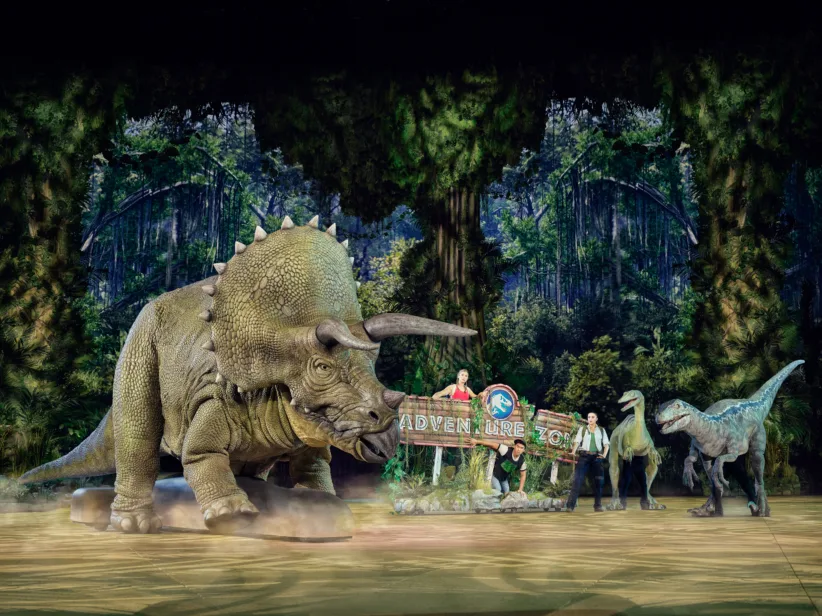This tour highlights a few of the many Greenwich Village houses and haunts where children’s book authors and illustrators have lived and worked. Start at the southwest corner of Seventh Avenue and West 14th Street and walk south three blocks, turning right onto Greenwich Avenue (a shop-lined street that slices diagonally through this part of town). Cross Greenwich and follow it for one block to Bank Street. Continue along Bank Street to the town house at number 27 (now divided into apartments) where Walter R. Brooks wrote most of the Freddy the Pig books. Brooks wrote for The New Yorker and in 1931 produced a travel book, New York: An Intimate Guide, in which he downplayed his neighborhood’s reputation as an enclave of wild-eyed bohemians. “The sincere artist seldom has time to grow a beard or follow the rigid rules of the unconventional,” Brooks, who favored tweeds and wing tips, observed. “You may live [in the Village] for weeks and not see a single fake artist — and if you see a real one, you won’t know it.” Continue one more block along Bank Street to number 69. This building, a one-time yeast factory and now a luxury condominium, served as the headquarters of the Bureau of Educational Experiments (later called the Bank Street College of Education) from 1930 to 1969. It was here, under the direction of founder Lucy Sprague Mitchell, that groundbreaking research in early childhood development was carried out, that many of America’s first preschool teachers received their training, and that pioneering writers for the very young — notably Margaret Wise Brown and Ruth Krauss — learned their craft. Backtrack half a block on Bank Street and turn left onto West 4th Street, continuing one block to where it intersects West 12th Street. (Such seemingly illogical, Mad Hatterish crisscrossings of numbered streets are all part of the Village’s legendary charm!) Crossing West 4th, walk a few steps to the right along West 12th, stopping in front of 280 West 12th Street, the row house where Robert McCloskey created the art for Make Way for Ducklings. In 1939, McCloskey moved to New York from Boston, where he had already made numerous sketches of the Public Garden, State House, and other landmarks featured in that most quintessentially Boston of all picture books. It was in New York, however, that he found the models for his ducklings. When not drawing preserved specimens at the American Museum of Natural History, McCloskey sketched the Long Island ducklings — as many as twelve at a time — that he purchased at a local market and kept in his rented fourth-floor studio. The bathtub served as a makeshift pond. McCloskey shared the West 12th Street studio with another future Caldecott Medal winner, Marc Simont, who, as a favor to his friend, would hold a duckling in a needed pose while McCloskey sketched. Turning left onto West 4th Street, walk four blocks to Charles Street and turn right onto Charles, stopping at number 92, where Maurice Sendak lived while writing and illustrating The Sign on Rosie’s Door and drawing the illustrations for Else Holmelund Minarik’s Little Bear and numerous other early works. (Sendak later moved a few blocks to the west, to an apartment at 29 West 9th Street, and there created Where the Wild Things Are). Proceed west on Charles, crossing Bleecker and Hudson Streets. A few steps farther brings you to the white dollhouse-like clapboard cottage at 121 Charles Street. This wonderland dwelling, known as Cobble Court for the stones set in the front yard, was Goodnight Moon author Margaret Wise Brown’s writing studio and sometime home from 1943 to 1952. When Brown had the eighteenth-century farmhouse, it was located elsewhere — at 1835 York Avenue and East 71st Street. Hidden from view by a tenement row, the house was reached via a ground-floor passageway through one of the tenements. The flamboyant author decked out her tiny sitting room with fur-upholstered furniture. A fireplace was the only heat source. Garth Williams depicted the fanciful house in his illustrations for Brown’s Little Golden Book, Mister Dog. Artist Clement Hurd was a guest there when Brown first showed him the manuscript of Goodnight Moon. Threatened with demolition, Cobble Court was moved to its present location in 1967.
This excerpt is from “Storied City: A Children’s Book Walking Tour Guide to New York City.” Copyright (C) 2003, by Leonard Marcus. Reprinted with permission from Dutton Children’s Books, a member of Penguin Group (USA).





















